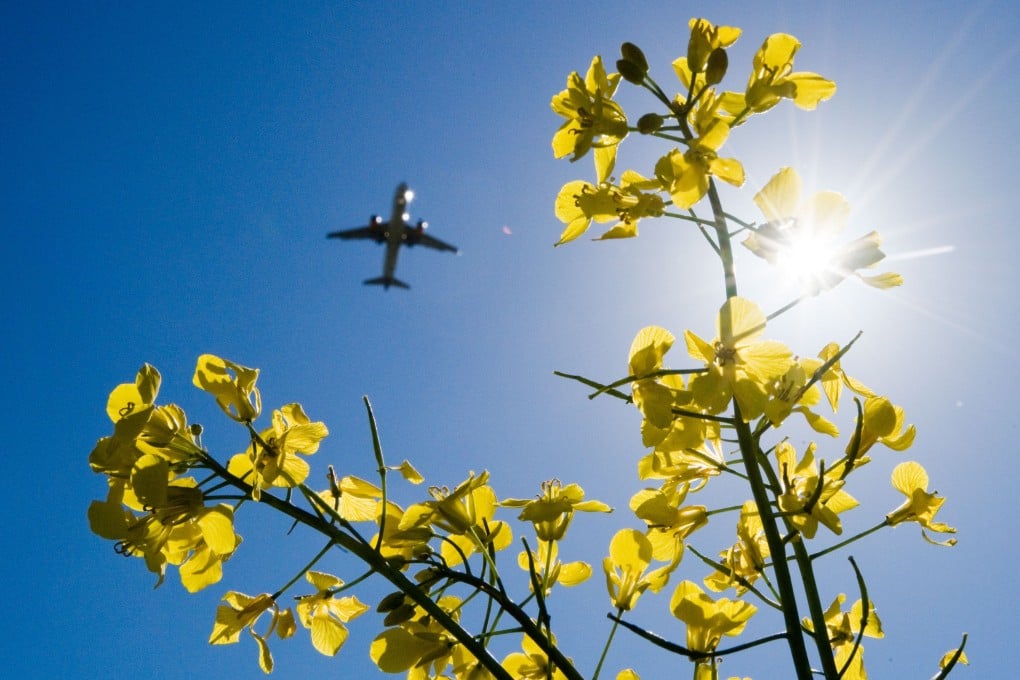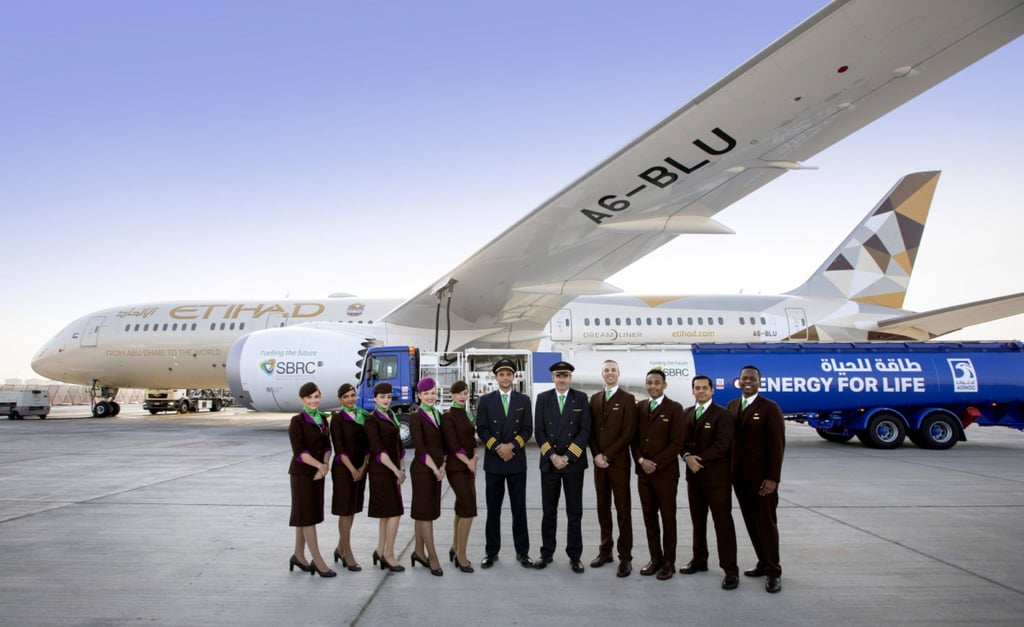Flying is terrible for the environment. Bio-fuels offer a solution to air travel’s impact on climate change
- Sustainable aviation fuels (SAFs), made from feedstocks such as plants and recycled cooking oil, have been tested by airlines including Etihad, Emirates and KLM
- Their relatively high cost, however, and a lack of will by regulatory bodies are key barriers to their widespread use

Flying is costly, in more ways than one. For instance, each passenger taking an economy class return trip from Hong Kong to London is responsible for pumping 2.82 tonnes of carbon dioxide equivalent into the atmosphere, according to an online calculator.
Sustainable aviation fuels (SAFs), derived from biological or synthetic feedstocks and adhering to strict sustainability criteria, offer a temporary solution for a world hooked on air travel but imperilled by climate breakdown. Their relative cost, however, allied with inaction by airline industry regulators and governments, has slowed their development almost to a standstill.
Nevertheless, a handful of airlines have been experimenting. In January 2019, Etihad conducted an Abu Dhabi – Amsterdam flight partially using fuel made with an oil from a desert succulent called Salicornia. When Emirates received its 116th Airbus A380 in December, the delivery flight ran on a mixture of regular jet fuel and that produced from recycled cooking oil. And in February, KLM announced that an Amsterdam – Madrid passenger flight was partially powered by 500 litres of synthetic kerosene developed using carbon dioxide, water and renewable energy.

But, as KLM press officer Marjan Rozemeijer says, SAFs currently account for just 0.18 per cent of the Dutch carrier’s fuel consumption. And according to Emirates, fewer than 200,000 tonnes of SAFs were produced globally in 2019 – less than 0.1 per cent of the total jet fuel used by commercial airlines.